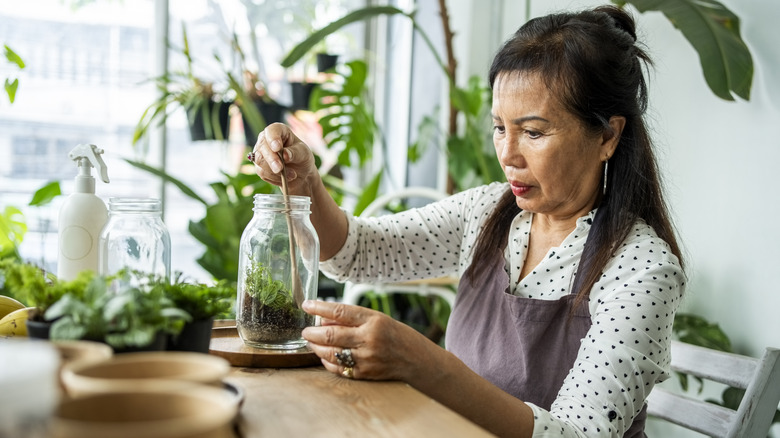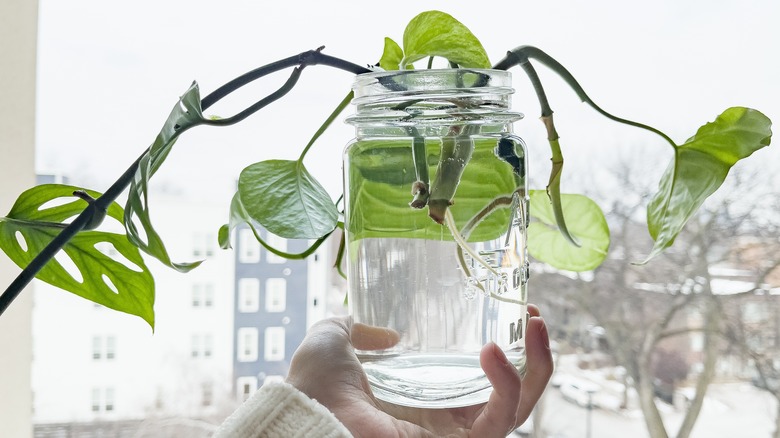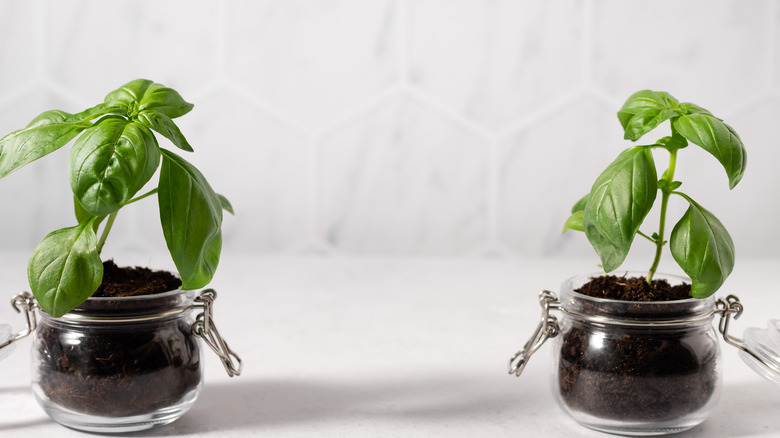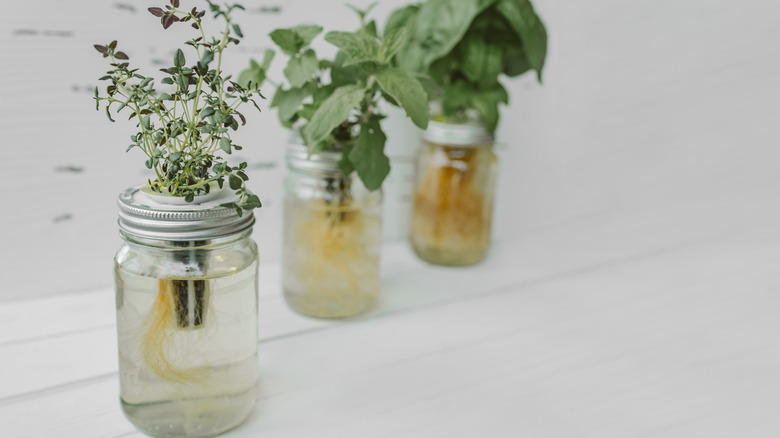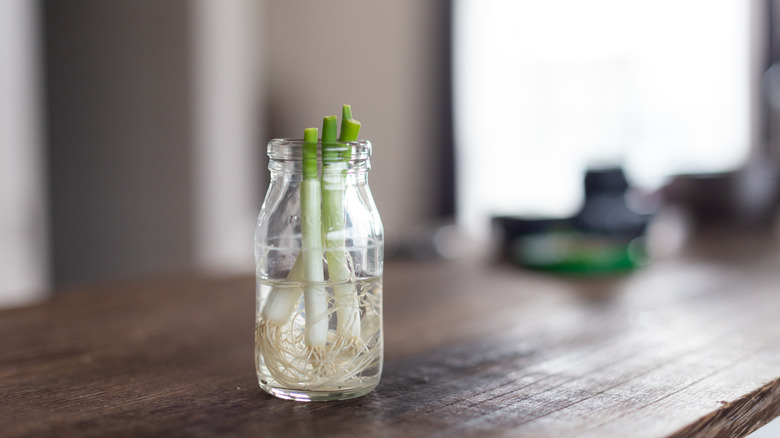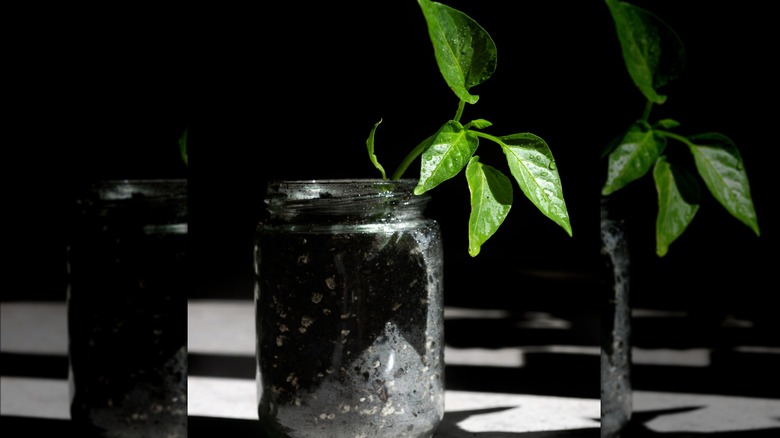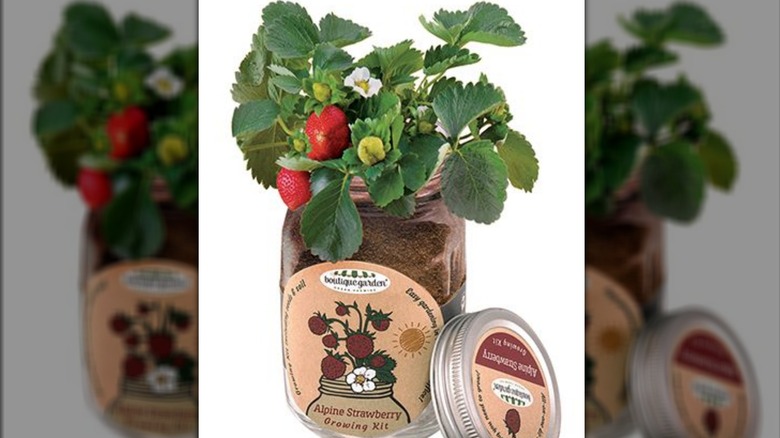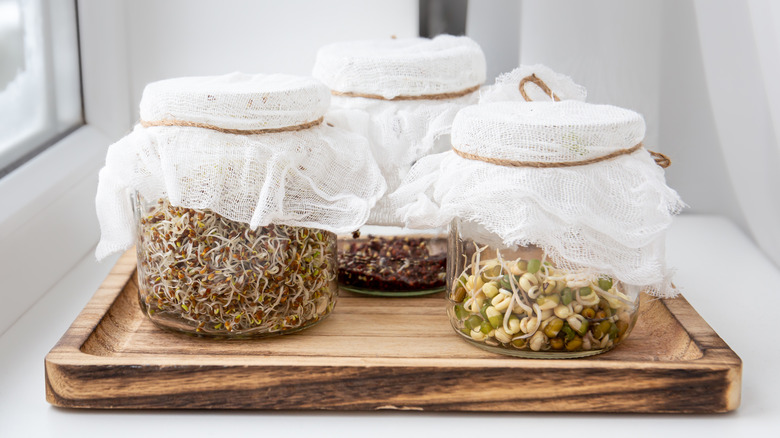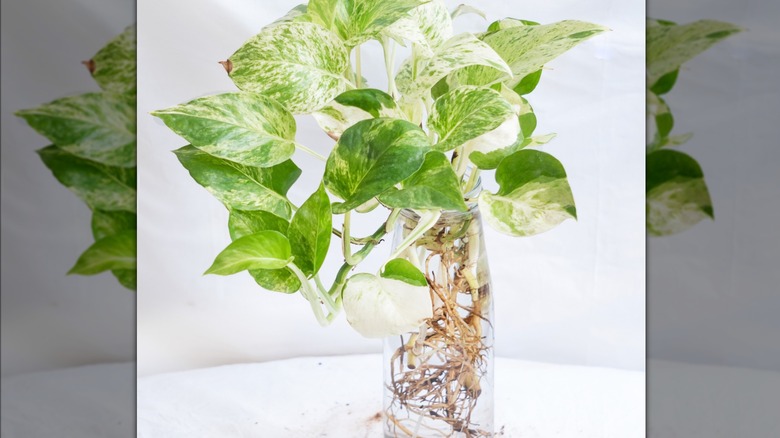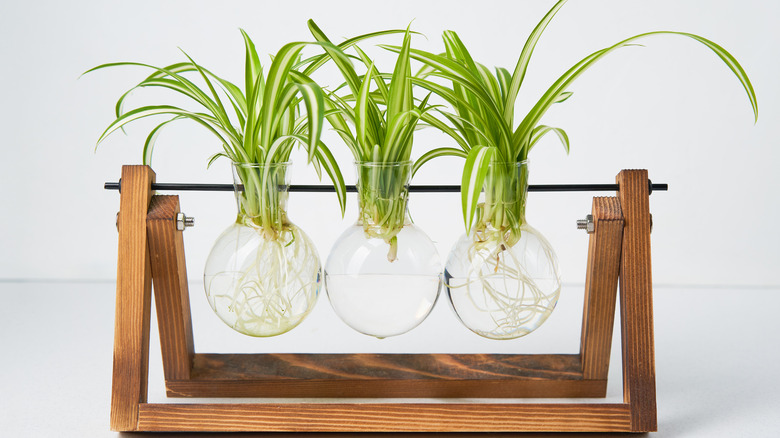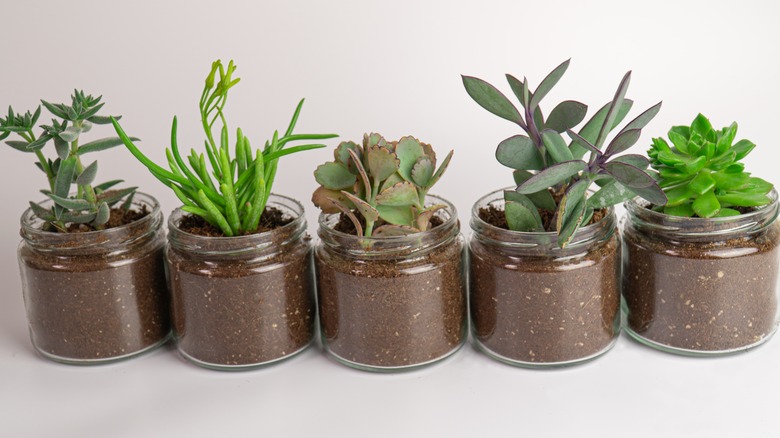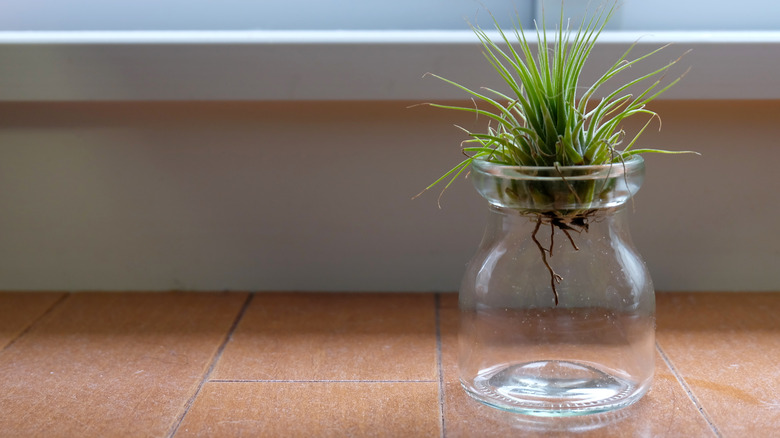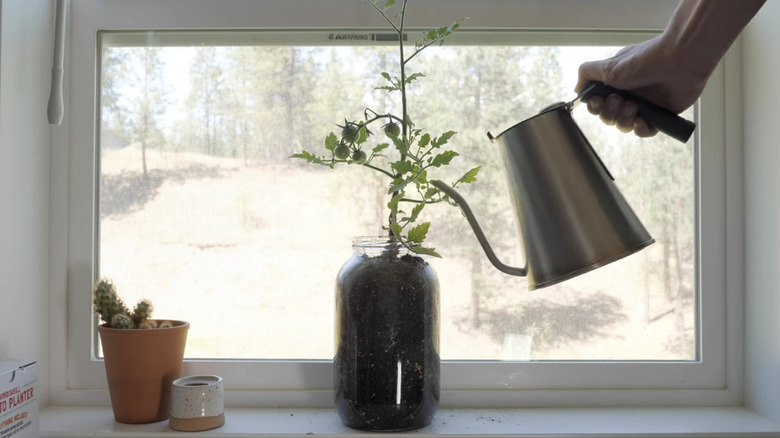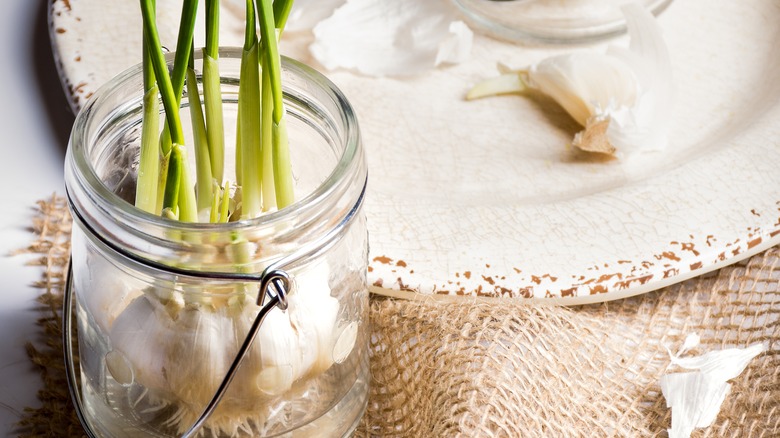12 Beautiful Houseplants You Can Grow In Glass Jars & Bottles
We may receive a commission on purchases made from links.
Want to start a garden but don't have the yard, the time, or the patience to start your own? No problem, as long as you've got some jars, bottles, and know a few gardening basics. There are a number of plants that can happily thrive in jars and bottles, but you just have to know which ones. Some require a bit of soil or gravel, while others can grow in just water in an innovative gardening practice called hydroponics. Herbs, fruits, vegetables, and decorative plants — including cherry tomatoes, strawberries, rosemary, and the low-maintenance Pothos houseplant — can all thrive in these glass vessels.
You can buy an assortment of Mason-style jars from most grocery stores, or find a more eclectic collection at your local thrift store. You can also reuse sauce jars, wine bottles, and so on. Whether you buy something new or recycle, make sure you are working with clean jars and bottles. But what to fill these glass vessels with? We've found the 12 plants best suited to jar and bottle gardening. We've also included information about each plant and how to keep it thriving in its tiny garden container.
1. A quick guide to jar and bottle gardening
As a general rule, larger plants that require soil and harvesting should be planted in wide-mouth jars, as you need to be able to actually reach your hand in from time to time, checking the moisture levels and trimming unwanted growth. But longer, hydroponic spindly plants can often happily grow out of narrower bottle necks.
The major drawback of using jars and bottles instead of regular planter pots for soil-based plants is that these glass vessels aren't typically fitted with drainage holes, and drainage is key to keeping most plants happy, as they can become susceptible to root rot and mold without it. If you like, you can drill a hole in these glasses with the proper drill bit, but you can keep it simple by adding a layer of small rocks. These allow excess water to flow out of the soil and into the gaps between the rocks, keeping your roots safe from excess moisture. Stash a few handfuls of gravel from your driveway or buy a bag at the home improvement store. For hydroponic water-based gardening, you won't be able to rely on water alone. Most plants will require frequent water changes and liquid fertilizer packets to give the plant nutrition it's not receiving from soil. Otherwise, the same gardening principles apply: don't over or under water and make sure your plant receives the right amount of sun.
2. Basil
Who doesn't love a fresh basil plant (Ocimum basilicum) on their countertop? This aromatic herb adds lovely fragrance to the home and flavor to your food. And it happens to grow beautifully in any old jar. Just take a grocery store basil plant, and break up the stems and roots until you have one stem you want to plant in a jar; do not add multiple stems to the jar, as this will cause overcrowding and kill the plant off. Mix in some extra potting soil, and you're set!
3. Thyme
If you can't get enough of fresh herbs, try growing thyme (Thymus vulgaris) in a glass jar or bottle. Thyme is a tightly packed, compact herb that can be happily planted in a container such as a jar or bottle, either in soil or water. You'll find that thyme is a very low maintenance shrub, making it ideal for a beginner gardener. And luckily, there are many ways to keep your indoor thyme plants healthy and happy.
4. Green onions
Did you know that you can grow green onions (Allium cepa) in a bottle from scraps? Just cut down the onion stalks to the thicker, white part of the stem (use the greens for culinary applications) and pop them in a shallow pool of water in a jar, allowing the stems to poke through the mouth of the bottle and stay upright. Eventually, new green stocks will emerge and you'll have a new crop of green onions. From there, decide if you want to keep the green onions in water or replant them in soil.
5. Peppers
Jar gardening isn't limited to delicate herbs and tiny flowers — you can grow substantial plants, too, such as small-fruited peppers (Capsicum annuum). Naturally, you probably won't be able to produce fist-sized bell peppers in a tiny jar, but you can try petite varietals such as mini sweet peppers, which are well-suited to container gardening. Save the seeds from your store-bought mini peppers and start off your own thriving pepper plant, which can give you more bonus seeds after harvest!
6. Strawberries
Although you are used to seeing strawberries grown in terra cotta clay pots, they can actually thrive in a wide-mouthed jar. Look for a dwarf variety of strawberries such as Alpine Strawberries (Fragaria vesca), as they require less room than other full-size varieties. You could also use the jar as a starter home for your strawberry plant to keep it protected from the elements until it is established, transferring it to a larger pot when it's mature enough and the season is right.
7. Sprouts
A huge benefit of sprouts and microgreens is that they can grow beautifully in a jar. Sprouts require a little more maintenance than regular plants, because they are susceptible to food borne illnesses such as , E. coli, salmonella, and listeria. So to successfully grow sprouts, ensure that you are rinsing and drying them regularly to prevent the growth of mold, and never allowing an excess of water to sit in the jar. Otherwise, sprouts can be easy to grow in a jar, and even easier with the help of seed growing lids and angled draining stands, which you can find on Amazon.
8. Pothos
Pothos (Epipremnum aureum) are one of the most low-maintenance houseplants available, and they're also incredibly easy to propagate and grow in glass jars and bottles. Simply cut a stem from your Pothos plant just below the node, then transfer it to the glass container of your choice and fill it with clean water. In just a few weeks, you'll see the stem sprout roots. From there, you can either keep your Pothos in water, or transfer it to another jar with some potting soil. Overall, the Pothos isn't super fussy and will be happy in nearly any container.
9. Spider plants
Spider plants (Chlorophytum comosum) are one of the most popular house plants, and for good reason. They purify the air around them, are very low maintenance, and yes, can be cultivated in soil or water in a glass jar or bottle. If you already have a spider plant, take a cutting from it to propagate a new plant by placing the cutting in a jar of water. Over time, the cutting will develop roots that you can keep in the water environment, or bury in soil in another jar.
10. Succulents
Succulents are the perfect glass jar plant for those with only the slightest of green thumbs, as these are super hardy, drought-tolerant plants. Best of all, they come in a ton of different varieties, and most are perfectly happy in a jar, so you don't need to worry about it overgrowing or repotting. Just be wary about overwatering and not providing adequate drainage, because the one thing succulents don't like is too much water.
11. Air plants
If you're someone who finds gardening to be a little too messy, consider growing an air plant (Tillandsia) in a bottle. Air plants don't grow in soil, and gather their nutrients from the surrounding air and moisture in it. You can plant them in any glass bottle, jar, or vase, as long as you don't attach a lid, because as you might guess, air plants need lots of air! Just be sure to water it and give it plenty of light.
12. Cherry tomatoes
Did you know you can grow your own stalks of tomatoes right on your windowsill in a Mason jar? Don't opt for big species like romas or beefsteaks, but cherry tomatoes (Solanum lycopersicum) would do beautifully in these glass containers — just be sure to get a dwarf varietal, and specifically species that do well with container gardening. Even though they're small tomatoes, they can cause the plant to snap, so you may want to add a stake to your jar garden to give the plant additional support.
13. Garlic
Growing your own garlic in a jar is fantastic and economical. When planted in soil, you can grow a head of garlic (Allium sativum) from a single clove and garlic greens when planted in water. Garlic greens are the long green shoots that grow from cloves. With store-bought garlic cloves, you don't have to start the new jar plant from seed, which will save you plenty of time. For garlic greens just pour enough water in that it covers about half of the clove, but isn't fully submerged.
